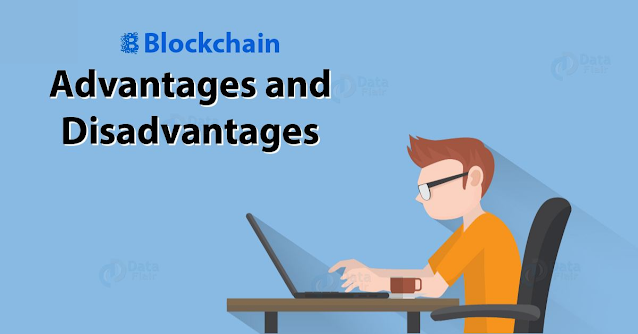In recent years, representatives of government agencies, business, the financial sector, and the banking community have shown great interest in a relatively new technology - blockchain. Initially, this technology was mentioned exclusively in connection with such a phenomenon as cryptocurrencies, the first of which, Bitcoin, appeared in 2009.
In 2013, blockchain 2.0 applications were in the spotlight, ranging from domain name registration to financial contracts, crowdfunding and even gaming, based on the same technologies that keep Bitcoin decentralized and secure.
According to D. and A. Tapscott, authors of the book "The Blockchain Revolution", "... a blockchain is an eternal digital distributed log of economic transactions, which can be programmed to record not only financial transactions, but practically everything that has value." In other words, a blockchain (or blockchain) is a distributed database with no storage devices connected to a common server. Such a database stores an ever-growing list of ordered records, so-called blocks, each of which is assigned a time stamp and a link to the previous block.
Advantages of blockchain technology
Blockchain is a meta-technology because it influences other technologies and is composed of multiple technologies. The architectural layers of the blockchain: a database, a software application, several computers connected to each other, clients who have access to it, the software environment on which it is based, tools for controlling it.
How does blockchain technology attract government and business structures?
First, safety.
Blockchain is a secured digital ledger, a peer-to-peer network that stores transactions for the transfer of ownership of objects, rather than databases of properties (for example, customer accounts with funds placed on them). The functions of checking and storing transactions are distributed among many nodes without the participation of regulators. Transactions are combined into chains, the order of which is fixed in blockchains (hence the name - blockchain). Each block contains information about the hash of the previous one, which protects the entire chain from changes. A large number of nodes and the cryptographic algorithm are used to make the substitution of information almost impossible. This feature eliminates such shortcomings of most of the existing infrastructures, such as centralization, the obligatory presence of trust relations between all market players, and the participation of regulators for the exchange of information.
Secondly, Cost
the implementation of blockchain-based infrastructure would significantly reduce the costs of maintaining it and mitigate numerous security risks. The absence of intermediaries saves money for all interacting parties. This is confirmed by the results of the analysis of operating expenses of 50 banking organizations, carried out by McLagan and Wirex:
- by optimizing data quality, increasing the level of transparency and internal regulation, it was possible to reduce the cost of financial reporting by 70%;
- simplification of the reconciliation of financial transactions can reduce costs by 30-50%;
- Simplification of shared access to customer data leads to a halving of costs for centralized activities;
- the result of a decrease in the need for reconciliation of transactions and search for errors, partial automation of the activities of specialists in mutual settlements and clearing is a 50% reduction in the cost of business operations.
Thirdly, Speed
the blockchain allows you to replace numerous data reconciliation models and thus significantly speed up any processes. A good example is the execution of an international letter of credit between S7 Airlines and Alfa-Bank in the form of a transaction through the Ethereum blockchain in 23 seconds instead of the usual 14 days.
Fourthly, Versatility
an important advantage of the blockchain is its versatility. With its help, you can create public databases: land registers, open resources for registering property rights, including intellectual property rights, energy management, voting via the Internet. More and more smart contracts are spreading - transactions that are automatically executed when a pre-programmed set of conditions occurs.
disadvantages of blockchain technology
Blockchain, like any technology, is not perfect; it has some obvious drawbacks, especially in terms of mass adoption of the technology.
So, it is worth calling its undefined regulatory status. Blockchain and cryptocurrencies are outside the legal regulation of most countries. Summing up the results of the first piloting and tests in the field of distributed ledger technology at the St. Petersburg International Economic Forum (May 2018), the First Deputy Chairman of the Central Bank of the Russian Federation From an economic point of view, the blockchain is endowed with certain disadvantages.
The high volatility of the most common blockchain with the Proof-of-Work consensus algorithm due to the complexity of the transaction, which makes it an expensive technology.
When transferring electronic values, the blockchain allows you to significantly save on payment for the services of intermediaries and guarantors. However, the very creation of the system and its implementation in any area is very costly.
Scalability is another limitation due to the size of the public blockchain. If the database is overloaded, the speed of transfers is significantly reduced. For example, in the Bitcoin system, one transaction can take 4-5 hours or more.
Blockchain differentiation. There are currently over 1,400 digital coins in existence, many of which have their own versions of the blockchain. It is not yet clear which of them will be able to survive and develop in the future, which of them will be preferred by developers and large companies, and which will disappear into oblivion.
Among the technical shortcomings, we highlight the following:
1. Impacts at the network level:
- DDoS (Distributed Denial of Service) hacker attack, or distributed denial of service attack;
- "attack of the Sibyl";
- Eclipse attack, or "information eclipse attack."
2. Impact at the user level:
botnets that are distributed through droppers are special anonymous malicious programs that disguise themselves as pirated versions of licensed programs. From a legal point of view, user-level vulnerability is associated with the de-anonymization of market participants.







